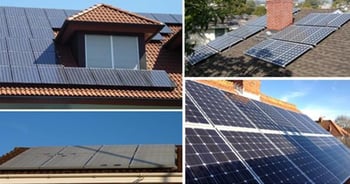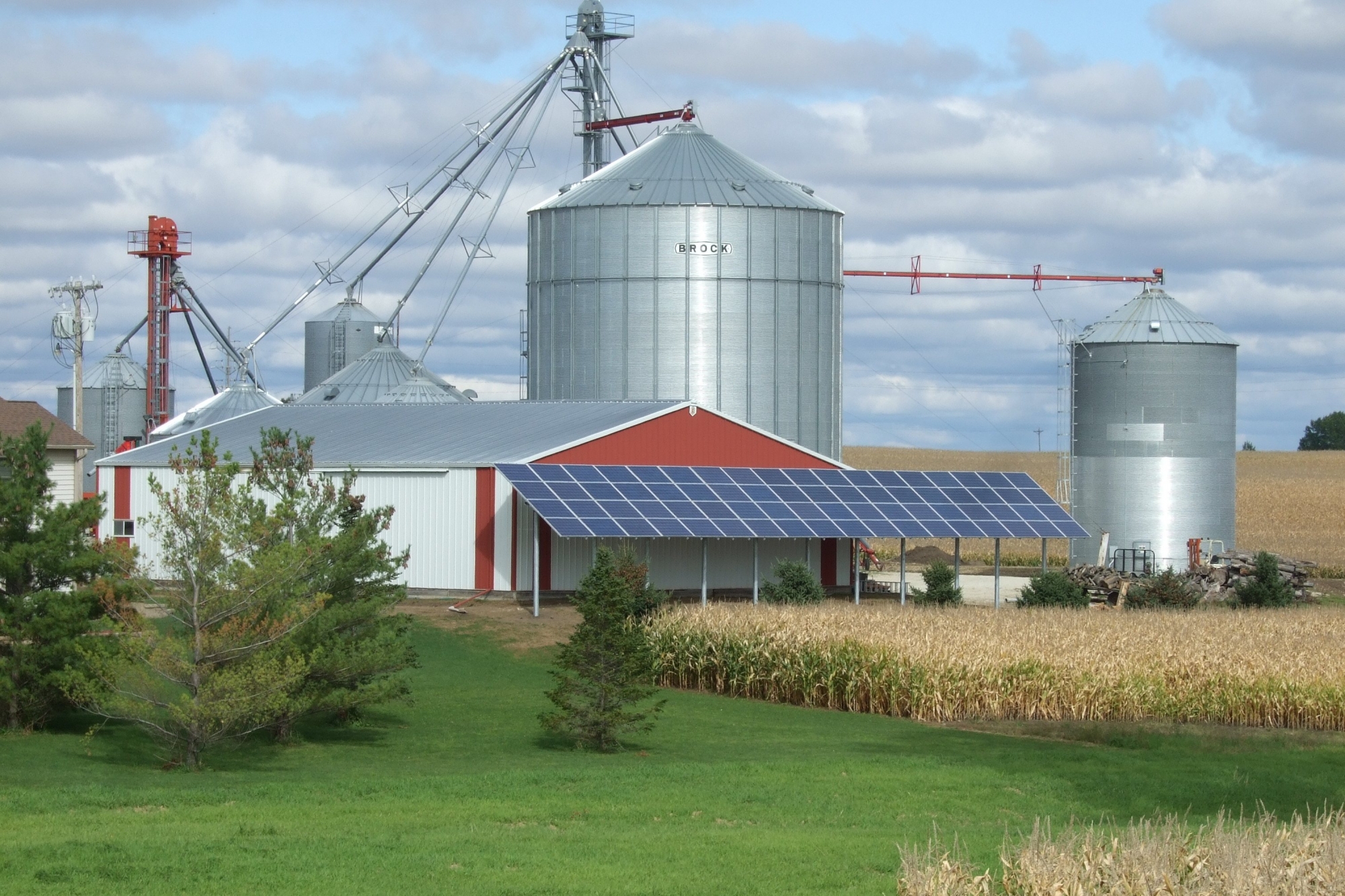So you’ve heard of the many benefits of generating your own energy on the farm and are considering building a solar system. That’s great news!
Agriculture operations are well-suited for solar generation. And with Net Metering, not only is solar good for your bottom line today, it will continue to improve as the cost of electricity increases over time. Not to mention, there are many loan options available to farmers looking to fund renewable energy projects.
However, there are many things to consider before taking the plunge and building a solar system on your property. The purpose of this blog is to answer some of the key questions about when you can and cannot install solar on your farm, and help you determine if a solar system is right for you.
1. Savings and Energy Production
Does solar make sense for your business? There are a number of factors that determine the feasibility of building a solar system on your farm. Solar is a flexible, modular technology that can be scaled up or down to fit your needs, but there are specific circumstances that improve its viability.
So what factors determine if a solar system is right for you?
Your Current Energy Costs

Your savings and system payback are based on how much you are currently paying for electricity as well as how much electricity you use. Electricity rates vary across provinces and states, and the specific rate class you are in will also impact how much of your costs you can avoid through solar.
If you don’t use that much electricity, solar may still make sense for you but smaller systems do not get any economies of scale. While every scenario is unique, if your monthly electricity bill is over $1,000, you can see a reasonable payback from a solar system on your farm.
The Placement of Panels on your Property
The location of solar panels on your property will determine your energy generation capability and upfront capital costs. Generally, your best case scenario is to build on an existing rooftop with a south facing slope. However, it is possible to generate enough energy to cover your costs even if your roof has an east-west slope, but we recommend against installing a system with a north facing slope.
You can also opt for ground mounted panels, but as you’ll learn in the next section, this can increase your up-front costs.
Sunlight Obstructions
 You should be aware of possible obstructions that could block the sunlight from reaching your solar panels. Although, shading changes throughout the day, the best case scenario is to ensure there are no trees or obstructions over 3.5m tall, unless they have a 10m setback from the building location.
You should be aware of possible obstructions that could block the sunlight from reaching your solar panels. Although, shading changes throughout the day, the best case scenario is to ensure there are no trees or obstructions over 3.5m tall, unless they have a 10m setback from the building location.
2. Rooftop Structural Capacity and Roof Age
As mentioned previously, it is generally recommended that you look for unused roof space when determining a location to place your solar panels. This could be a barn, house, shed or even a chicken coop. Rooftops are a great location for solar panels for a number of reasons:
- They reduce your up-front costs: You likely already have a structure that can support solar panels, as opposed to installing brand new foundations , which can increase costs and permitting requirements.
- Roof space is less likely to interfere with other operations: The space on your property is already occupied by a building, so you don’t need to sacrifice additional square footage that could be used for other farm operations.
- Control of surrounding area: Any obstructions likely share the property with the building, enabling the owner to make modifications as necessary (cutting down trees, moving equipment, etc.).
Having said that, there are a number of things to consider before you begin construction on your rooftop.

The Structural Capacity of your Roof
While roof installation is the ideal option, you need to be conscious of the fact that pre-existing structures were likely not designed with a rooftop solar installation in mind. If you intend to install panels on your roof, you’ll need to ensure the structural capacity is up to code. In general, your roof needs to be able to support 3 to 6 pounds per square foot of additional weight to be able to handle a solar system.
The Age of your Roof
The condition of your existing roof and its remaining useful life is a critical component of assessing the feasibility of solar. Solar systems will be there for 20 to 30 years and if you have to change your roof during that time period, you will incur additional costs. Therefore, it is important to know whether or not your roof has another 20+ years of useful life. We recommend that your roof is less than five to ten years old to avoid having to remove and reinstall the panels over their useful life.
If you’re not sure whether or not your roof is fit to support solar panels, we will happily come out and conduct an assessment for you.
3. Electrical Grid Capacity
Electric utilities are required to regulate how much energy generation is being fed into the grid to maintain power quality and voltage stability. According to Hydro One:
"The total generation to be interconnected to a distribution system circuit line section, including the proposed generator, will not exceed 7% of the annual line section peak load."
 In other words, if your neighbours use up that capacity before your project is in, you're going to be waiting for a very long time. If you want to take advantage of Solar Net Metering, you'll need to build and register with your local distribution company before the capacity is spoken for. The sooner, the better!
In other words, if your neighbours use up that capacity before your project is in, you're going to be waiting for a very long time. If you want to take advantage of Solar Net Metering, you'll need to build and register with your local distribution company before the capacity is spoken for. The sooner, the better!
How do you know if there’s available capacity in your area? We will gladly find out for you at no cost.
I’m Interested in Solar for my Farm... What’s Next?
There are many considerations that go into building a solar system, and you’ll want to maximize your outputs while minimizing your costs. This often means making trade offs to determine the best system design for your unique and specific needs.
For this reason, you should absolutely conduct a feasibility analysis prior to construction that will outline:
- How much your system will cost you
- How much energy your system will produce over the course of a year
- How long it will take you to payback your system
Despite unpredictable weather conditions, your yearly output can be calculated accurately using solar specific design software. A feasibility analysis will help you avoid costly mistakes, give you peace of mind to go forward with your project, and ensure you maximize the potential of your system for years to come.
Get Started Today!
By setting up your solar generator today and leveraging Net Metering, you hedge against increasing electricity prices for years to come. The amount that you save increases the more that electricity prices increase. In Ontario they have seen over a 90% increase in the last 10 years.
Compass makes renewable energy a reality by providing expert and nuanced advice to decision makers. With experience in both public and private sector, and both large and small projects across Canada and the US, we provide you with a detailed feasibility analysis so you have a clear understanding on economic benefits of going solar today.

Is Solar Right For Your Business?
Contact us today for a Feasibility Analysis of your particular business and build site!



